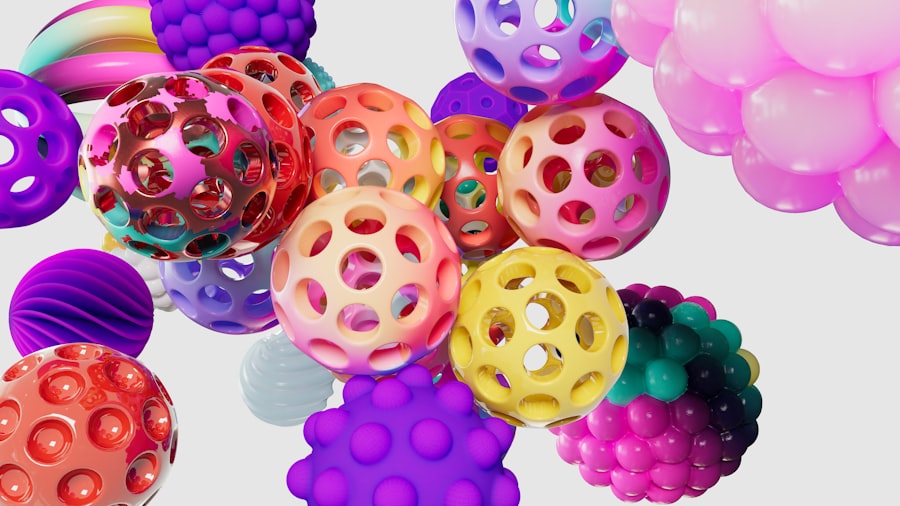Download links
How to install 3D Printing: Today's Latest Results APK?
1. Tap the downloaded 3D Printing: Today's Latest Results APK file.
2. Touch install.
3. Follow the steps on the screen.
Description
3D printing, also known as additive manufacturing, has revolutionized the way products are designed and produced. This innovative technology allows for the creation of three-dimensional objects from digital files by layering materials in a precise manner. The process begins with a computer-aided design (CAD) model, which is then sliced into thin horizontal layers by specialized software.
The printer reads this information and deposits material layer by layer until the final object is formed. This method contrasts sharply with traditional subtractive manufacturing, where material is removed from a solid block to create a part, often resulting in waste and inefficiency. The origins of 3D printing can be traced back to the early 1980s when Charles Hull invented stereolithography, the first 3D printing technology.
Since then, the field has expanded dramatically, with numerous techniques and materials emerging. Today, 3D printing encompasses a wide range of technologies, including fused deposition modeling (FDM), selective laser sintering (SLS), and digital light processing (DLP), each with its unique advantages and applications. As the technology continues to evolve, it is becoming increasingly accessible to businesses and individuals alike, paving the way for a new era of manufacturing and design.
Key Takeaways
- 3D printing is a revolutionary technology that allows for the creation of three-dimensional objects from digital files.
- Advancements in 3D printing technology have led to increased speed, accuracy, and affordability, making it more accessible to a wider range of industries and applications.
- 3D printing is being used in various industries such as healthcare, automotive, aerospace, and fashion, to create prototypes, custom parts, and even human tissue and organs.
- The impact of 3D printing on manufacturing includes reduced lead times, lower costs, and the ability to create complex designs that were previously impossible with traditional manufacturing methods.
- A wide range of materials can be used in 3D printing, including plastics, metals, ceramics, and even food and living cells, allowing for endless possibilities in design and production.
Advancements in 3D Printing Technology
The advancements in 3D printing technology over the past few decades have been nothing short of remarkable. One significant development is the improvement in printing speed and resolution. Early 3D printers were notoriously slow and produced rough, low-resolution prints.
However, modern printers can achieve high speeds while maintaining exceptional detail, thanks to innovations in laser technology and print head design. For instance, continuous liquid interface production (CLIP) technology allows for rapid printing by using a continuous flow of resin, resulting in smoother surfaces and faster production times. Another notable advancement is the diversification of materials that can be used in 3D printing.
Initially limited to plastics, the range of printable materials has expanded to include metals, ceramics, and even biological materials. Metal 3D printing technologies, such as direct metal laser sintering (DMLS), enable the production of complex metal parts that are both lightweight and strong, making them ideal for aerospace and automotive applications. Furthermore, researchers are exploring bioprinting techniques that can create living tissues and organs, potentially transforming the field of medicine.
Applications of 3D Printing in Various Industries

The applications of 3D printing span a multitude of industries, showcasing its versatility and transformative potential. In the healthcare sector, for example, 3D printing is being used to create custom prosthetics and implants tailored to individual patients’ anatomical needs. Surgeons can utilize patient-specific models generated from imaging data to plan complex procedures more effectively.
This personalized approach not only enhances surgical outcomes but also reduces recovery times. In the aerospace industry, companies like Boeing and Airbus are leveraging 3D printing to produce lightweight components that contribute to fuel efficiency and overall performance. By utilizing additive manufacturing techniques, these companies can create intricate geometries that would be impossible or prohibitively expensive to achieve through traditional manufacturing methods.
Additionally, the ability to produce parts on-demand reduces inventory costs and lead times, allowing for more agile supply chains.
Impact of 3D Printing on Manufacturing
| Metrics | Data |
|---|---|
| Reduction in lead time | Up to 90% |
| Cost savings | Up to 50% |
| Product customization | Improved |
| Complexity of designs | Easily achievable |
| Reduction in material waste | Up to 90% |
The impact of 3D printing on manufacturing processes is profound and multifaceted. One of the most significant changes is the shift towards decentralized production. Traditional manufacturing often relies on large factories located in specific regions, leading to long supply chains and increased transportation costs.
In contrast, 3D printing enables localized production, allowing companies to manufacture products closer to their end-users. This not only reduces shipping expenses but also minimizes the carbon footprint associated with transportation. Moreover, 3D printing fosters innovation by enabling rapid prototyping and iterative design processes.
Designers can quickly create prototypes to test concepts and gather feedback without incurring the high costs associated with traditional tooling methods. This agility encourages experimentation and creativity, leading to more innovative products entering the market at a faster pace. Companies can respond more effectively to consumer demands and market trends, ultimately enhancing their competitiveness.
Materials Used in 3D Printing
The choice of materials in 3D printing plays a crucial role in determining the performance and applicability of printed objects. Initially dominated by thermoplastics such as PLA (polylactic acid) and ABS (acrylonitrile butadiene styrene), the material landscape has evolved significantly. Today, a wide array of materials is available for various applications, including metals like titanium and aluminum, ceramics for dental applications, and even bio-based materials for sustainable practices.
Metals are particularly noteworthy due to their strength-to-weight ratio and durability. Industries such as aerospace and automotive are increasingly adopting metal 3D printing for producing complex components that require high performance under extreme conditions. For instance, GE Aviation has utilized additive manufacturing to produce fuel nozzles for jet engines that are lighter and more efficient than traditionally manufactured counterparts.
Additionally, advancements in composite materials have led to the development of hybrid structures that combine the benefits of different materials, further expanding the possibilities of 3D printing.
Challenges and Limitations of 3D Printing

Despite its many advantages, 3D printing faces several challenges and limitations that must be addressed for broader adoption across industries. One significant hurdle is the issue of scalability. While 3D printing excels at producing small batches or customized items, scaling up production to meet high-volume demands remains a challenge.
Traditional manufacturing methods are often more efficient for mass production due to their established processes and economies of scale. Another limitation lies in material properties and performance consistency. While advancements have been made in expanding the range of printable materials, not all materials exhibit the same mechanical properties as their traditionally manufactured counterparts.
For example, parts produced through additive manufacturing may have anisotropic properties, meaning they perform differently depending on the direction of the applied load. This inconsistency can pose challenges in industries where reliability and safety are paramount.
Future Trends in 3D Printing
Looking ahead, several trends are poised to shape the future of 3D printing technology. One prominent trend is the integration of artificial intelligence (AI) and machine learning into the design and manufacturing processes. AI algorithms can optimize designs for additive manufacturing by analyzing performance data and suggesting improvements that enhance efficiency or reduce material usage.
This synergy between AI and 3D printing could lead to smarter design practices that push the boundaries of what is possible. Additionally, sustainability will play an increasingly vital role in the evolution of 3D printing. As environmental concerns grow, there is a push towards using eco-friendly materials and processes that minimize waste.
Biodegradable filaments made from renewable resources are gaining traction among hobbyists and professionals alike. Furthermore, closed-loop recycling systems that allow for the reuse of printed materials could significantly reduce waste associated with traditional manufacturing practices.
The Future of 3D Printing
The future of 3D printing holds immense promise as it continues to evolve and integrate into various sectors of society. With ongoing advancements in technology, materials science, and design methodologies, additive manufacturing is set to redefine how products are conceived, developed, and produced. As industries embrace this transformative technology, we can expect to see increased efficiency, reduced waste, and enhanced customization capabilities.
The potential applications are vast—from creating complex aerospace components to revolutionizing healthcare with personalized medical devices—indicating that we are only scratching the surface of what this technology can achieve. The journey ahead promises exciting developments that will shape not only industries but also our everyday lives as we move towards a more sustainable and efficient future in manufacturing.
If you are interested in exploring more creative ways to enhance your photos, you may want to check out PicsArt Photo Studio Collage 2.0.
You can read more about it in this article.
FAQs
What is a 3D result?
A 3D result refers to the outcome of a 3D lottery game, where players choose a three-digit number and win prizes based on matching the drawn numbers.
How is a 3D result determined?
A 3D result is determined through a random drawing of three numbers, typically using a mechanical ball machine or a computerized random number generator.
Where can I find the 3D result today?
You can find the 3D result today by checking the official website of the lottery operator, visiting authorized lottery outlets, or checking local newspapers for the published results.
What are the prizes for matching the 3D result?
The prizes for matching the 3D result vary depending on the specific rules of the lottery game, but typically include different prize tiers for matching different combinations of numbers.
Can I play the 3D lottery game online?
Some lottery operators offer the option to play the 3D lottery game online through their official websites or mobile apps, allowing players to participate and check results remotely.





